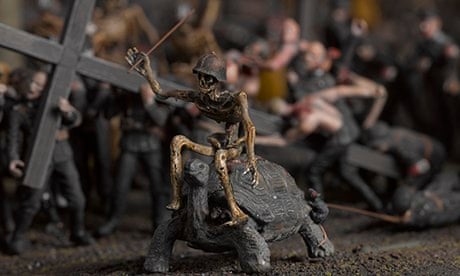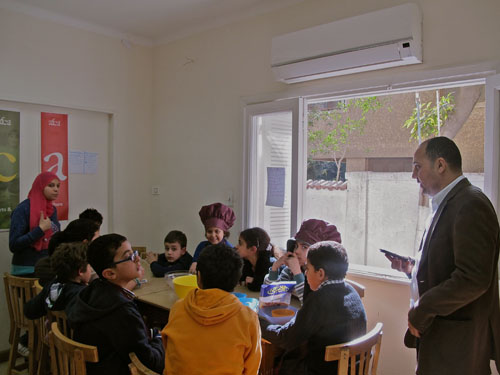Six months after its launch, the MASS Alexandria pilot studio program opened its first exhibition to the public on 8 May, showing the work of 12 young artists from Cairo and Alexandria.
Envisioned as an alternative educational program by visual artist Wael Shawky, MASS Alexandria seems promising despite criticism waged against it.
Shawky, who studied and briefly taught at the Fine Arts Academy in Alexandria, saw shortcomings with Egypt’s formal art educational system and over the past few years has been working on filling in the gap.
“Contemporary artistic practices are hardly explored at the academy,” Shawky says.
The study of art history and criticism at the Fine Arts Academy doesn’t go beyond the modernism of the late 1950s. Research on the contemporary period done in graduate school is also fragmentary and based mostly on personal initiative.
Another major problem with the existing educational system is its emphasis on craftsmanship and form, with little attention paid to the concept of the artwork, Shawky added.
Organized around a series of weekly seminars, one of the key goals of the pilot program is to engage students with research based works and critical discussions on artistic practices.
Every Friday, Sarah Rifky, an independent curator and assistant director at MASS Alexandria, would meet up with the students, introducing them to seminal texts and moderating discussions on key issues of relevance to both the local and international art scenes. Occasionally, guest lecturers such as visual artist Malak Helmy and the artistic director of Documenta 13, Carolyn Christov-Bakargiev, would moderate the sessions and critique the students’ works. At the beginning, some of the discussions were alienating, but with time – as many of the students acknowledge – their relevance to their artistic practices became more obvious.
In addition to theoretical grounding, MASS Alexandria offered its students studio space to work on their own projects – a key challenge for many Alexandrian artists, who eventually stop practicing art because of the lack of space. At the same time, students were given the autonomy to develop their own projects. Many had complained that some faculty members at the academy interfere too much with their work under the pretext of guidance on what art should or shouldn’t be.
MASS Alexandria has been criticized as mimicking Western styles of contemporaneity. Several non-government affiliated art spaces have repeatedly faced similar accusations. Critics often base their argument on that video works – which are generally perceived as “contemporary media” – tend to dominate the exhibitions of such spaces. The student exhibition at MASS Alexandria, however, was diverse and participating artists seem to choose the form based on their concepts rather than preference for a particular medium.
Islam Hassan, a young visual artist who completed the program, described his experience at MASS Alexandria as very beneficiary.
“It helped me develop a suitable visual language for my ideas and concepts,” he told Al-Masry Al-Youm.
Working with drawings and prints for years, Hassan got to experiment through the program with various artistic media and techniques.
“After numerous discussions on historical interpretations of art, I was finally able to find the medium best suited to express and communicate my ideas,” he explained.
His video work, “Political Propaganda,” combines an imaginary speech by Egyptian novelist Mohamed Kamel Hussien, author of City of Wrong, with political history scenes. “Political Propaganda” explores the nature of the relationship between the individual and the community.
Another work in the MASS Alexandria exhibition is Salma Badawy’s multi-media piece “Government Project – Egypt.” Inspired by the work of Persian polymath Ibn Sina on chromotherapy, Badawy used a color test developed by Ibn Sina in 1025 to analyze the personality of government employees.
Badawy has always been interested in color, yet she often focused on aesthetics and craftsmanship in her paintings. At MASS Alexandria, she was able to combine her interest in color with horoscopes and physiological color analysis. In “Government Project – Egypt,” she asked government employees to move their hands slowly on colored cards with their eyes closed. Once they felt an interruption, Badawy would analyze their personality based on the color of the card.
Her choice to work with government employees was no coincidence. She believes that this group of people is generally misunderstood in society.
“I realized through the project that an artist is first and foremost a human being and needs to engage with others overcoming stereotypes,” she told Al-Masry Al-Youm. Badawy wants to continue experimenting with chromotherapy with different groups. She believes that people need good listeners even if they were artists and not psychologists.
So far, the pilot program has been successful. But as Shawky plans to expand it into a one-year program, securing financial support remains a challenge.




